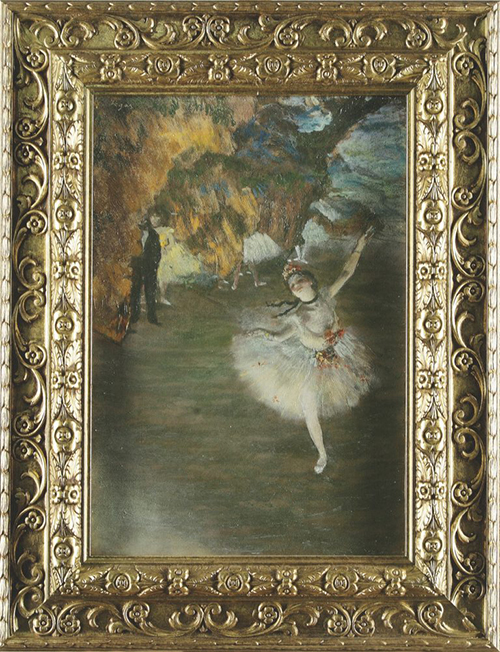정준모
This Company “Clones” Masterpieces

A framed clone of Edgar Degas’ s”The Star” (orig. 1878) (all photos courtesy of Artevera)
Would you like to have a Vermeer or a Caravaggio in your living room above the sofa? Maybe a van Gogh or a Degas painting would be a better match for your drapery and credenza? Artevera, a company I encountered while walking through the MuseumExpo at this year’s AAM annual meeting promises to produce “clones” of any work of art “with stunning accuracy” according to their full-color brochure.

The company’s representative, one Lorenzo da Madice, told me that they believe that they can sell these copies to museums and churches that will want to use them as placeholders when they lend out originals or place them in traveling exhibitions. Of course this begs the question of why, for example, the Uffizi would ever lend out “The Birth of Venus.” Da Madice seems certain that reproductions that are said to render colors identical to the original and even mimic the quality and texture of the brushwork will give visitors all they are looking for. Such an audacious business plan could only originate in the state of the Home Shopping Network and the birthplace of schemes for fleecing retirees: Florida. Artevera relayed that they are based in Italy in Siena, Tuscany, and in the US in Ormond Beach, Florida.
There is something undeniably American about its marketing and promotion. According to da Madice, the company makes all the cloned paintings in Tuscany, clearly in order to appeal to some sort of Old World authenticity. The name itself, “Artevera,” translates as “true art,” and the idea of calling the work “clones” instead of copies, to suggest that the reproductions somehow retain some of the “genetic material” of an original. The subliminal similarity of Lorenzo Da Madice’s name to the de Medici family that was at the center of the Italian Renaissance also seems employed to romance the potential buyer. It’s the best of both worlds: Old world construction (though machine-made) and the accessibility that comes from treating the consumer as sovereign. Anyone can have these masterpieces, and they can function as whatever you want: wallpaper, place mats, signs of middle-class membership. The company does its part dismantling of the notion of authenticity and aura being attached to an original work of art. Surprise! You can find both Renaissance charm and 21st-century kitsch in a warehouse in Florida.

FAMILY SITE
copyright © 2012 KIM DALJIN ART RESEARCH AND CONSULTING. All Rights reserved
이 페이지는 서울아트가이드에서 제공됩니다. This page provided by Seoul Art Guide.
다음 브라우져 에서 최적화 되어있습니다. This page optimized for these browsers. over IE 8, Chrome, FireFox, Safari